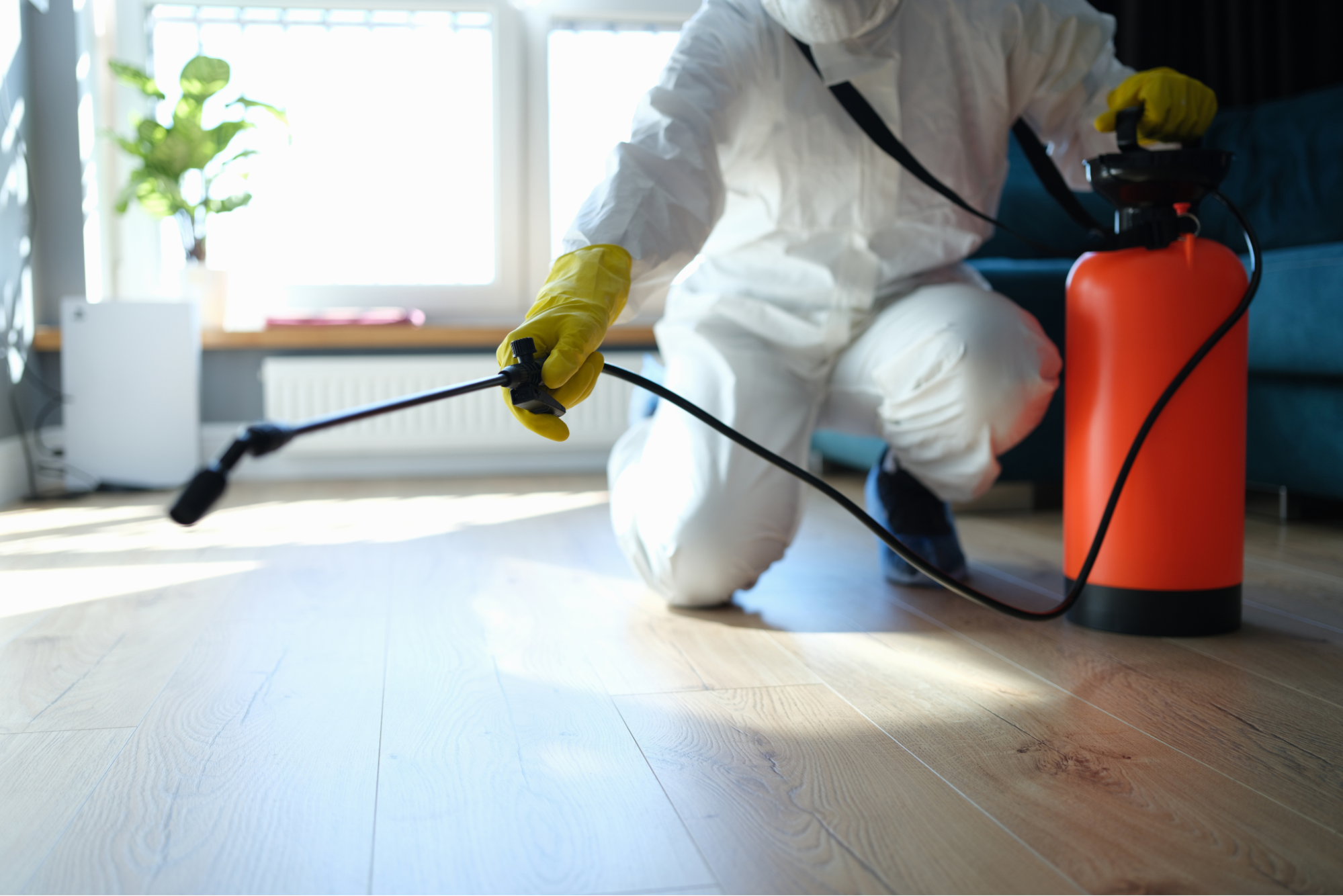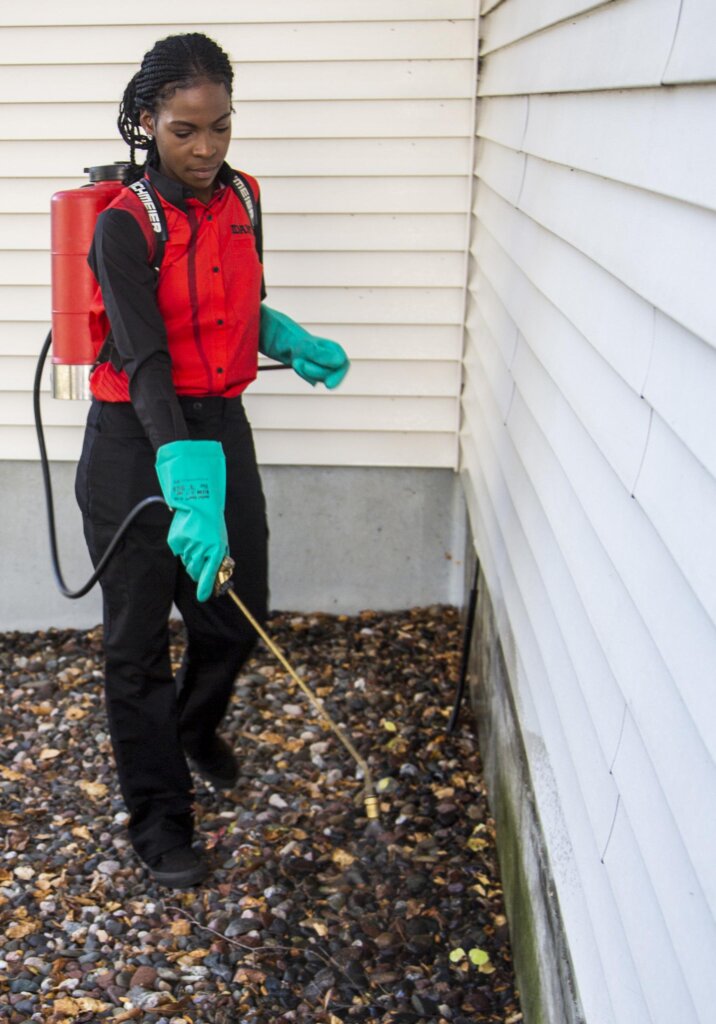A1 Charlotte Pest Control Companies - Your Neighborhood Pest Professionals
A1 Charlotte Pest Control Companies - Your Neighborhood Pest Professionals
Blog Article
Bed Insect Therapy Malfunction: Comparing Chemical Vs. Non-Chemical Solutions
In the world of insect control, particularly when dealing with the relentless concern of bed bugs, the selection between chemical and non-chemical therapy options can be an essential one. Both approaches supply distinctive benefits and drawbacks, influencing factors such as effectiveness, safety factors to consider, and total price. By analyzing the nuanced details of each method, a clearer understanding of which course to go after in addressing a bed bug infestation can be attained.
Performance of Chemical Treatments
Chemical treatments for bed bug infestations have actually been extensively identified for their quick and powerful efficacy in eliminating these pests. When considering the performance of chemical therapies, it is important to comprehend that they can provide a fast and detailed option to a bed insect problem.
Additionally, chemical treatments have the benefit of using residual results, indicating that they can remain to remove bed insects even after the initial application. This residual activity is especially advantageous in combating any kind of prospective re-infestations. Additionally, the rapid action of chemical therapies can bring relief to people encountering extreme bed insect infestations, permitting them to restore control of their space promptly.
Safety Interest In Chemical Solutions
One critical facet that calls for careful factor to consider when making use of chemical solutions for bed insect therapy is ensuring the security of passengers and the setting. While chemical therapies can be efficient in eradicating bed insects, they might pose risks if not dealt with appropriately. One of the main security worries with chemical remedies is the possible injury they can create to human health. Exposure to specific chemicals utilized in bed pest therapies can lead to breathing issues, skin inflammation, or various other damaging responses, especially in individuals with pre-existing problems or level of sensitivities. In addition, improper application or dose of chemical pesticides can result in toxic residues remaining in the cured location, posing long-term health risks to passengers.
Moreover, the ecological effect of chemical solutions is another significant factor to consider. Some pesticides used in bed insect therapies may be hazardous to beneficial bugs, wild animals, and ecological communities if they leach right into the soil or water supply. It is vital to make use of chemical therapies carefully, following safety and security guidelines, and considering much less toxic options to minimize these threats and guarantee the secure and effective management of bed insect problems.
Benefits of Non-Chemical Approaches
Thinking about the prospective safety issues and ecological impact linked with chemical options for bed bug treatment, checking out non-chemical approaches provides an appealing choice with several unique benefits. Non-chemical methods provide a much safer choice for houses, especially those with individuals, kids, or family pets conscious rough chemicals. These strategies remove the risks of direct exposure to toxic compounds, lowering the potential for negative wellness results. Furthermore, non-chemical treatments are eco-friendly, as they do not add to air or water contamination, making them a sustainable selection for parasite control.
Furthermore, non-chemical options can be reliable in targeting bed bugs, consisting of hard-to-reach locations where chemical treatments might not pass through - A1 pest control charlotte nc bed bugs. Techniques such as warmth treatment, vacuuming, steam cleaning, and cushion coverings offer thorough elimination without the usage of damaging chemicals.
Limitations of Non-Chemical Treatments

In addition, non-chemical treatments typically need multiple applications to accomplish effective eradication. This can be taxing and may not always assure complete removal of all bed bugs and their eggs, especially in concealed or hard-to-reach locations.
In addition, the success of non-chemical therapies heavily Source relies upon proper execution and thoroughness, which can be testing for individuals without professional knowledge. Insufficient application of non-chemical techniques might cause incomplete eradication, resulting in relentless problems and the need for additional treatments.
Consequently, while non-chemical treatments have their advantages, it is necessary to acknowledge these restrictions and consider them when determining one of the most reliable method for managing bed pest infestations.
Cost Contrast: Chemical Vs. Non-Chemical Options
Offered the constraints linked with non-chemical treatments, an important aspect to evaluate in the context of bed insect administration is the price comparison in between chemical and non-chemical options. Chemical therapies commonly include the application of insecticides by experts, which can range from $250 to $900 per room, depending upon the intensity of the invasion and the size of the location to be dealt with. In contrast, non-chemical treatments like warmth treatment or vapor can be more pricey, with prices ranging from $1,000 to $6,000 for an entire home. While the first expense of chemical treatments may appear reduced, multiple therapies might be needed to completely eliminate the infestation, possibly boosting the general expense. On the other hand, non-chemical alternatives might supply an extra green and lasting remedy, although they can be cost-prohibitive for some people. Inevitably, when thinking about the expense of bed pest therapy options, it is necessary to evaluate the upfront costs Go Here against the performance and long-term sustainability of the picked technique.
Final Thought

Taking into consideration the prospective security issues and ecological impact associated with chemical options for bed bug therapy, exploring non-chemical methods offers an encouraging alternative with several distinctive advantages.Offered the restrictions linked with non-chemical therapies, an important facet to evaluate in the context of bed bug administration is the cost comparison between chemical and non-chemical options. In comparison, non-chemical treatments like heat therapy or steam can be more pricey, with prices varying from $1,000 to $6,000 for a whole home. While the initial getting rid of rats cost of chemical treatments may seem lower, numerous therapies might be required to fully remove the problem, possibly raising the total cost.In final thought, when contrasting chemical and non-chemical bed pest therapy alternatives, it is vital to take into consideration effectiveness, safety, benefits, restrictions, and expense.
Report this page